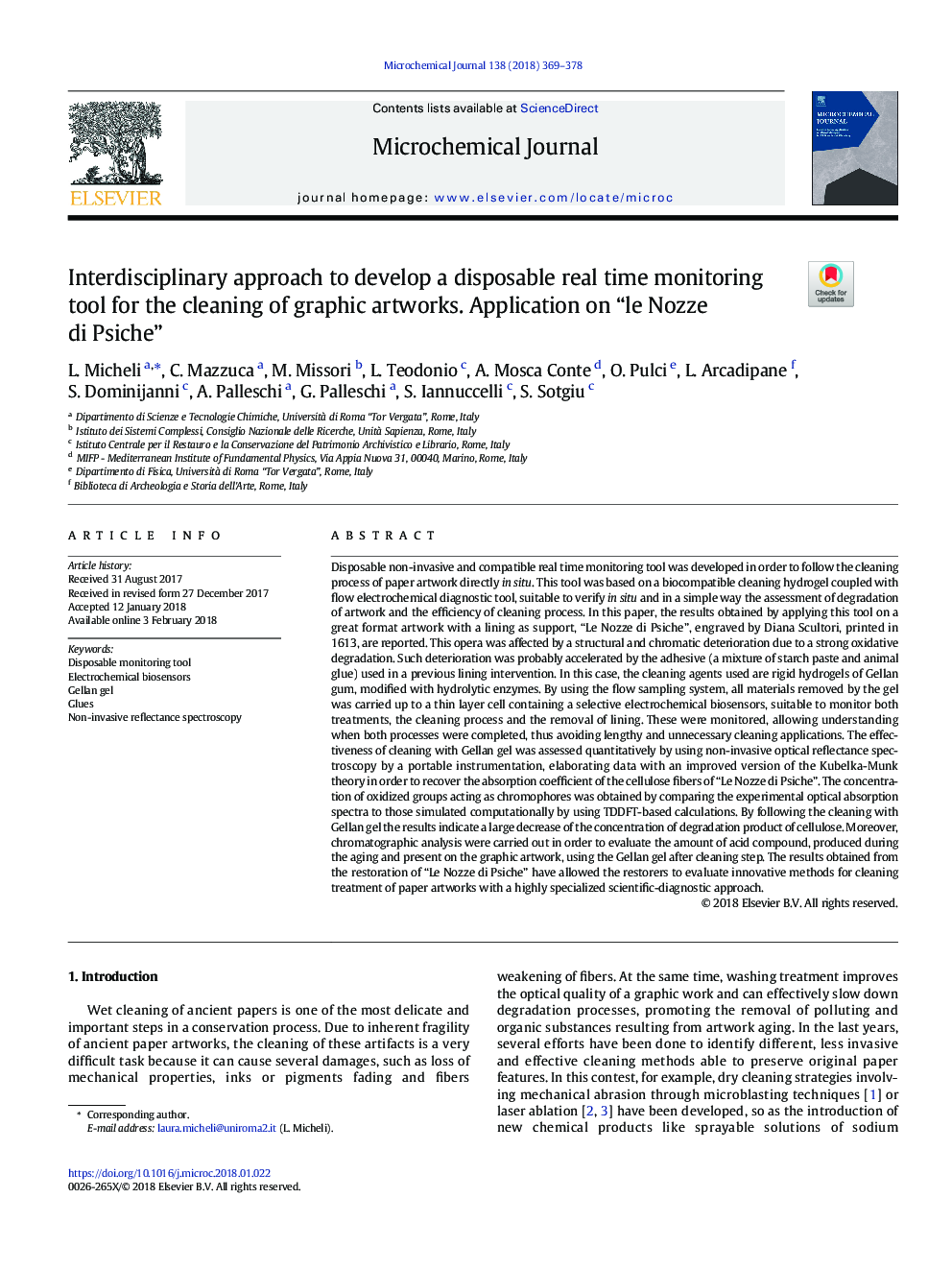| Article ID | Journal | Published Year | Pages | File Type |
|---|---|---|---|---|
| 7640998 | Microchemical Journal | 2018 | 10 Pages |
Abstract
Disposable non-invasive and compatible real time monitoring tool was developed in order to follow the cleaning process of paper artwork directly in situ. This tool was based on a biocompatible cleaning hydrogel coupled with flow electrochemical diagnostic tool, suitable to verify in situ and in a simple way the assessment of degradation of artwork and the efficiency of cleaning process. In this paper, the results obtained by applying this tool on a great format artwork with a lining as support, “Le Nozze di Psiche”, engraved by Diana Scultori, printed in 1613, are reported. This opera was affected by a structural and chromatic deterioration due to a strong oxidative degradation. Such deterioration was probably accelerated by the adhesive (a mixture of starch paste and animal glue) used in a previous lining intervention. In this case, the cleaning agents used are rigid hydrogels of Gellan gum, modified with hydrolytic enzymes. By using the flow sampling system, all materials removed by the gel was carried up to a thin layer cell containing a selective electrochemical biosensors, suitable to monitor both treatments, the cleaning process and the removal of lining. These were monitored, allowing understanding when both processes were completed, thus avoiding lengthy and unnecessary cleaning applications. The effectiveness of cleaning with Gellan gel was assessed quantitatively by using non-invasive optical reflectance spectroscopy by a portable instrumentation, elaborating data with an improved version of the Kubelka-Munk theory in order to recover the absorption coefficient of the cellulose fibers of “Le Nozze di Psiche”. The concentration of oxidized groups acting as chromophores was obtained by comparing the experimental optical absorption spectra to those simulated computationally by using TDDFT-based calculations. By following the cleaning with Gellan gel the results indicate a large decrease of the concentration of degradation product of cellulose. Moreover, chromatographic analysis were carried out in order to evaluate the amount of acid compound, produced during the aging and present on the graphic artwork, using the Gellan gel after cleaning step. The results obtained from the restoration of “Le Nozze di Psiche” have allowed the restorers to evaluate innovative methods for cleaning treatment of paper artworks with a highly specialized scientific-diagnostic approach.
Related Topics
Physical Sciences and Engineering
Chemistry
Analytical Chemistry
Authors
L. Micheli, C. Mazzuca, M. Missori, L. Teodonio, A. Mosca Conte, O. Pulci, L. Arcadipane, S. Dominijanni, A. Palleschi, G. Palleschi, S. Iannuccelli, S. Sotgiu,
